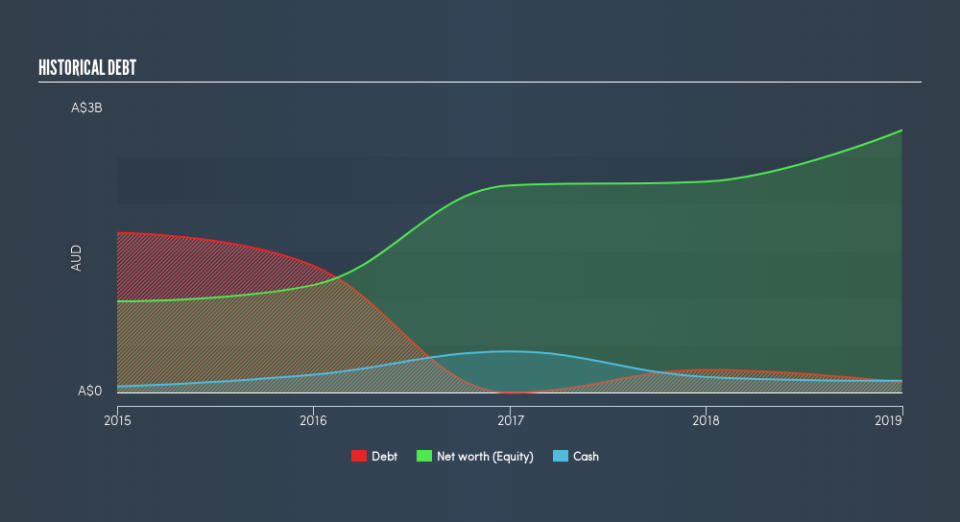All You Need To Know About Viva Energy Group Limited's (ASX:VEA) Financial Health

Want to participate in a short research study? Help shape the future of investing tools and you could win a $250 gift card!
Stocks with market capitalization between $2B and $10B, such as Viva Energy Group Limited (ASX:VEA) with a size of AU$4.1b, do not attract as much attention from the investing community as do the small-caps and large-caps. However, history shows that overlooked mid-cap companies have performed better on a risk-adjusted manner than the smaller and larger segment of the market. VEA’s financial liquidity and debt position will be analysed in this article, to get an idea of whether the company can fund opportunities for strategic growth and maintain strength through economic downturns. Note that this information is centred entirely on financial health and is a top-level understanding, so I encourage you to look further into VEA here.
View our latest analysis for Viva Energy Group
Does VEA Produce Much Cash Relative To Its Debt?
Over the past year, VEA has reduced its debt from AU$290m to AU$159m , which includes long-term debt. With this reduction in debt, VEA currently has AU$124m remaining in cash and short-term investments to keep the business going. Additionally, VEA has generated cash from operations of AU$287m in the last twelve months, resulting in an operating cash to total debt ratio of 180%, indicating that VEA’s debt is appropriately covered by operating cash.
Does VEA’s liquid assets cover its short-term commitments?
At the current liabilities level of AU$2.1b, it seems that the business has been able to meet these commitments with a current assets level of AU$2.4b, leading to a 1.18x current account ratio. The current ratio is calculated by dividing current assets by current liabilities. Usually, for Oil and Gas companies, this is a suitable ratio as there's enough of a cash buffer without holding too much capital in low return investments.
Can VEA service its debt comfortably?
With a debt-to-equity ratio of 5.7%, VEA's debt level is relatively low. VEA is not taking on too much debt commitment, which can be restrictive and risky for equity-holders. We can test if VEA’s debt levels are sustainable by measuring interest payments against earnings of a company. Ideally, earnings before interest and tax (EBIT) should cover net interest by at least three times. For VEA, the ratio of 9.85x suggests that interest is appropriately covered, which means that lenders may be less hesitant to lend out more funding as VEA’s high interest coverage is seen as responsible and safe practice.
Next Steps:
VEA’s high cash coverage and low debt levels indicate its ability to utilise its borrowings efficiently in order to generate ample cash flow. Furthermore, the company exhibits proper management of current assets and upcoming liabilities. This is only a rough assessment of financial health, and I'm sure VEA has company-specific issues impacting its capital structure decisions. I recommend you continue to research Viva Energy Group to get a better picture of the stock by looking at:
Future Outlook: What are well-informed industry analysts predicting for VEA’s future growth? Take a look at our free research report of analyst consensus for VEA’s outlook.
Valuation: What is VEA worth today? Is the stock undervalued, even when its growth outlook is factored into its intrinsic value? The intrinsic value infographic in our free research report helps visualize whether VEA is currently mispriced by the market.
Other High-Performing Stocks: Are there other stocks that provide better prospects with proven track records? Explore our free list of these great stocks here.
We aim to bring you long-term focused research analysis driven by fundamental data. Note that our analysis may not factor in the latest price-sensitive company announcements or qualitative material.
If you spot an error that warrants correction, please contact the editor at editorial-team@simplywallst.com. This article by Simply Wall St is general in nature. It does not constitute a recommendation to buy or sell any stock, and does not take account of your objectives, or your financial situation. Simply Wall St has no position in the stocks mentioned. Thank you for reading.

